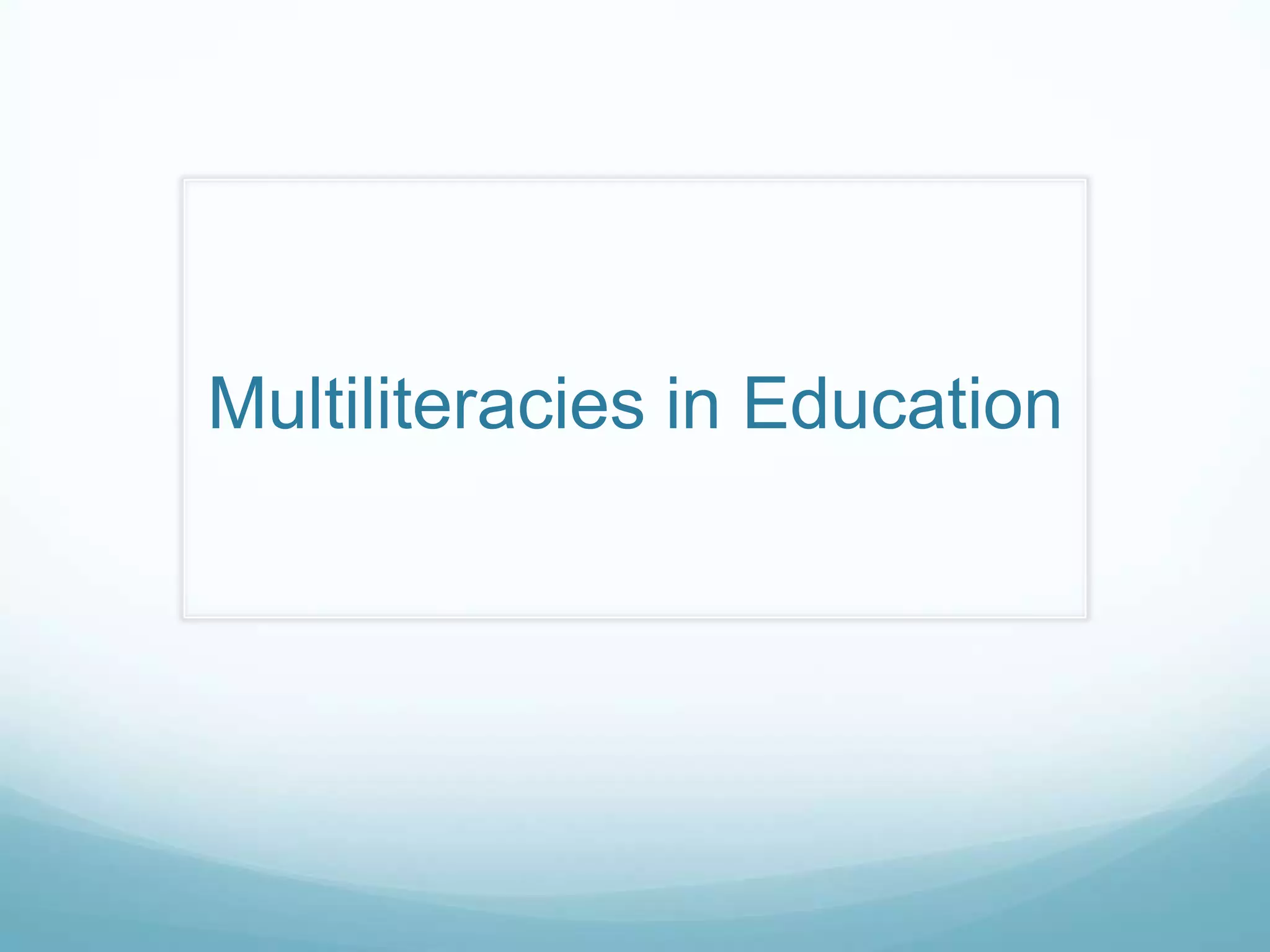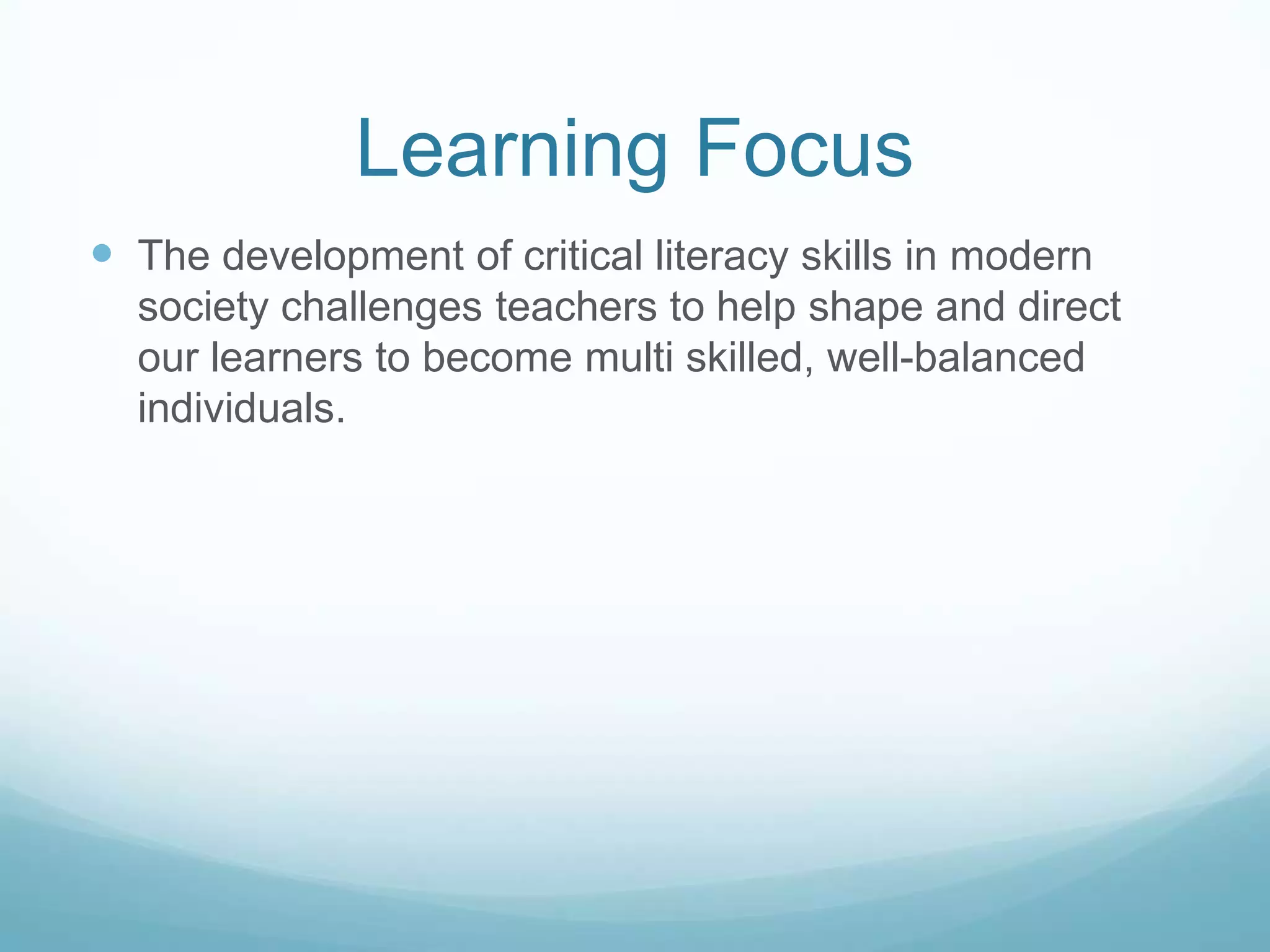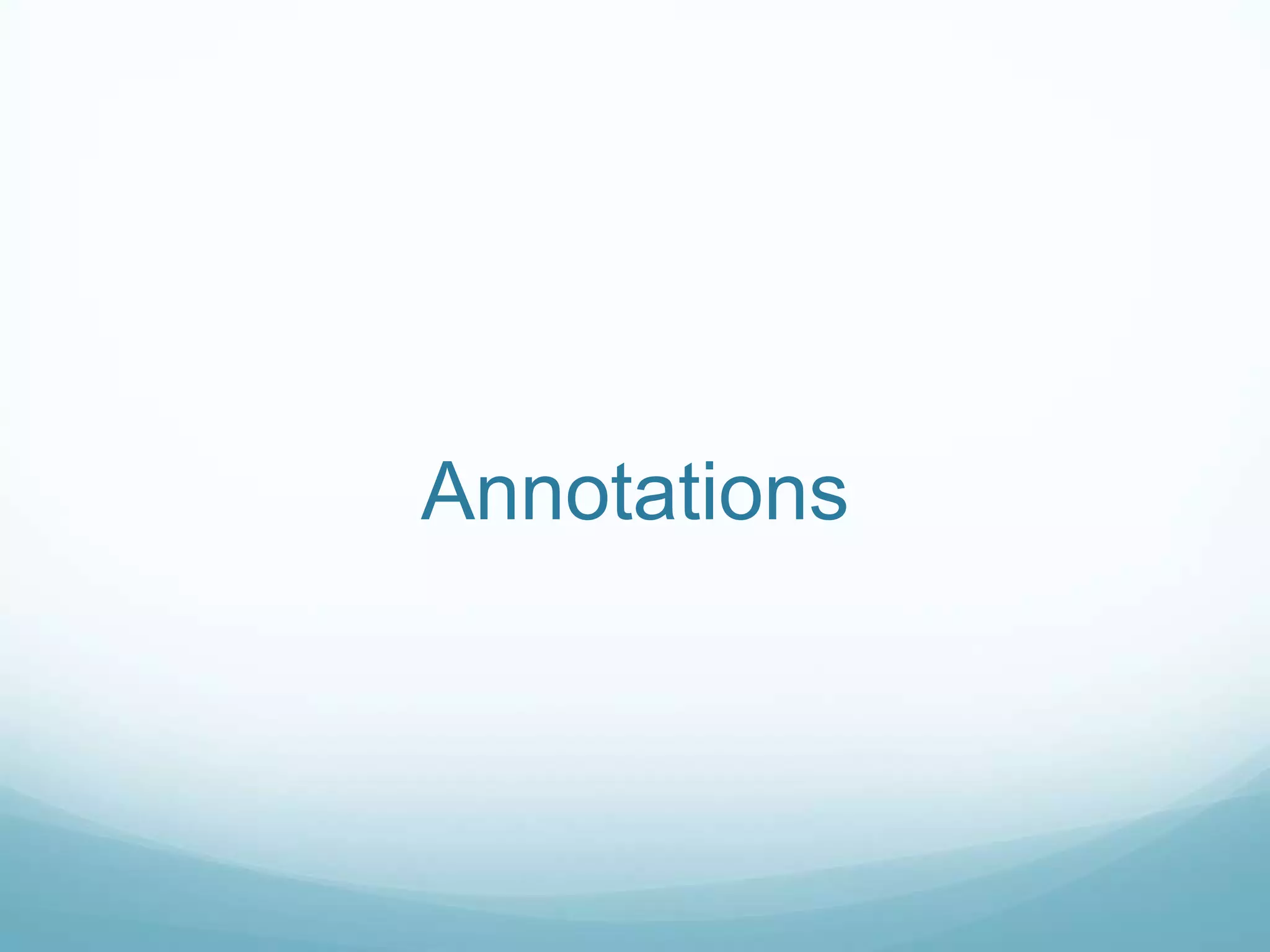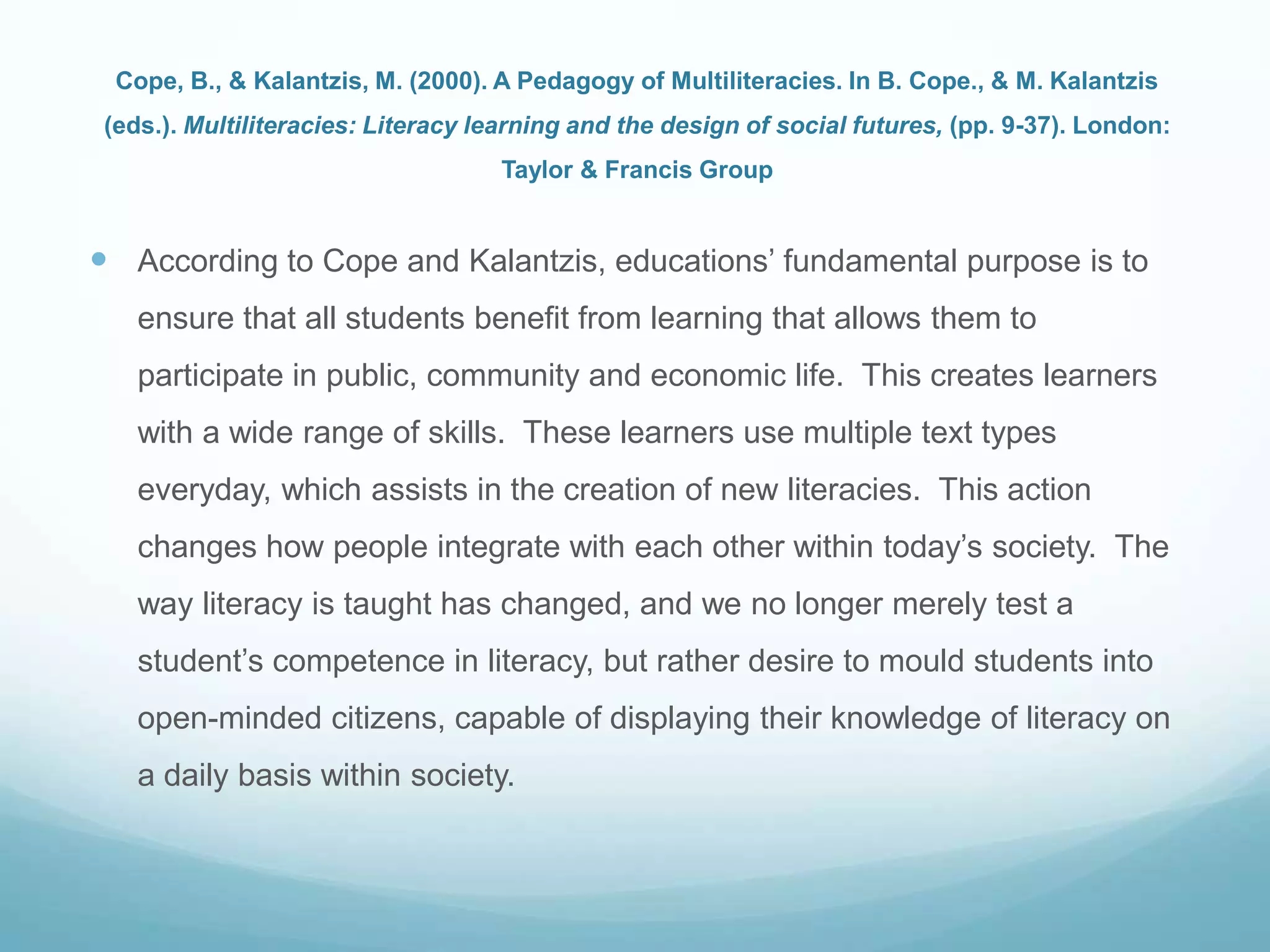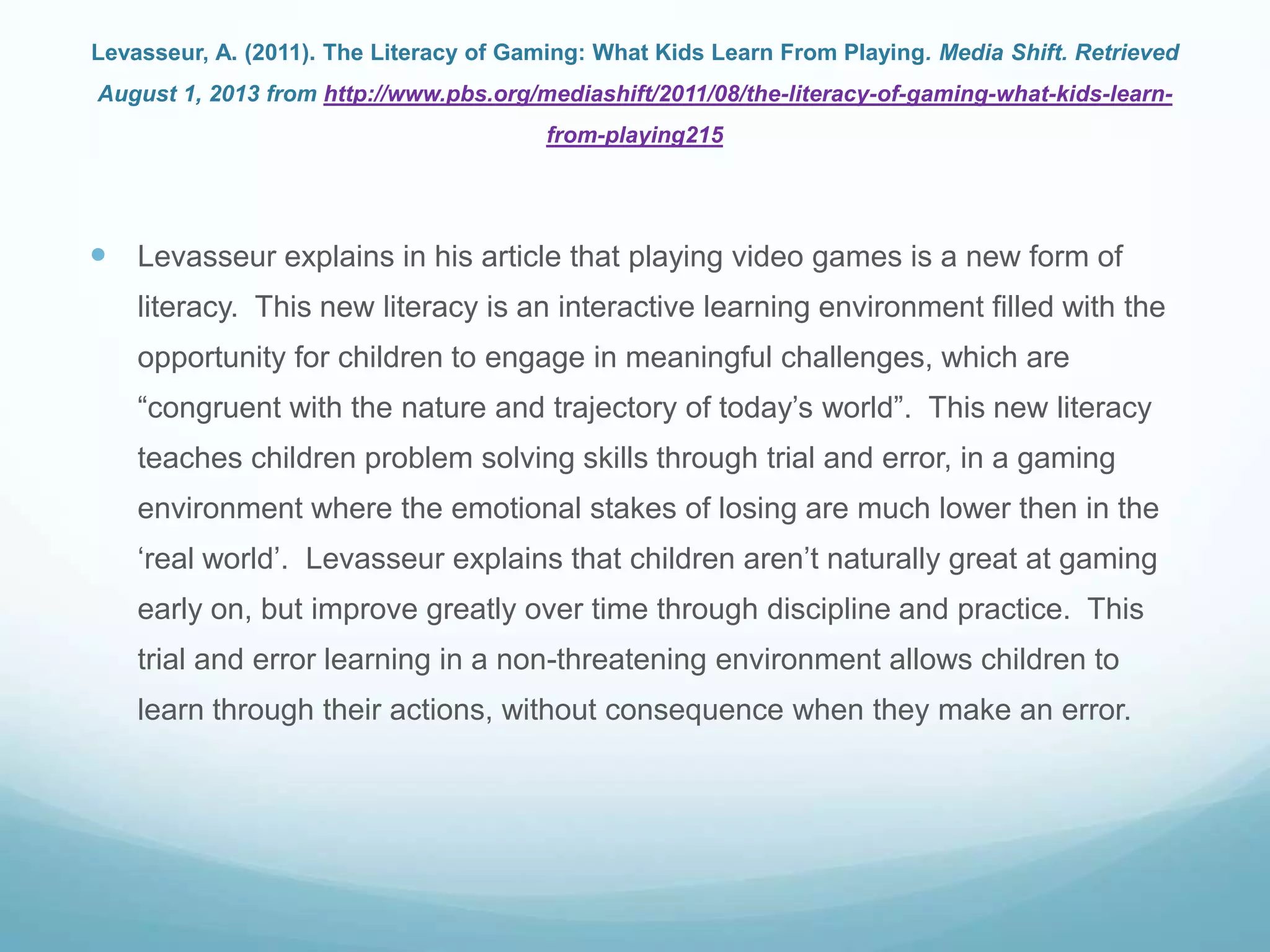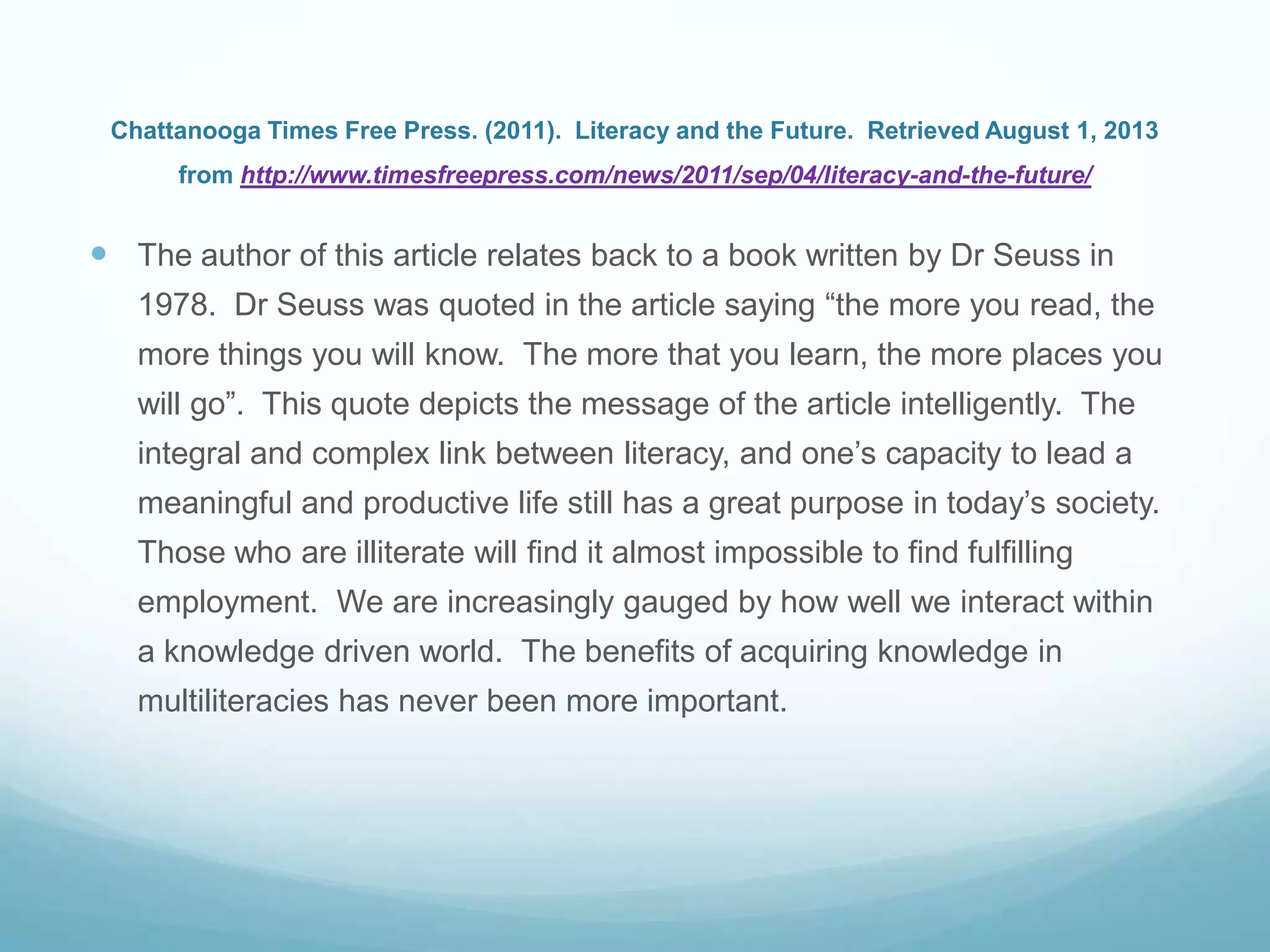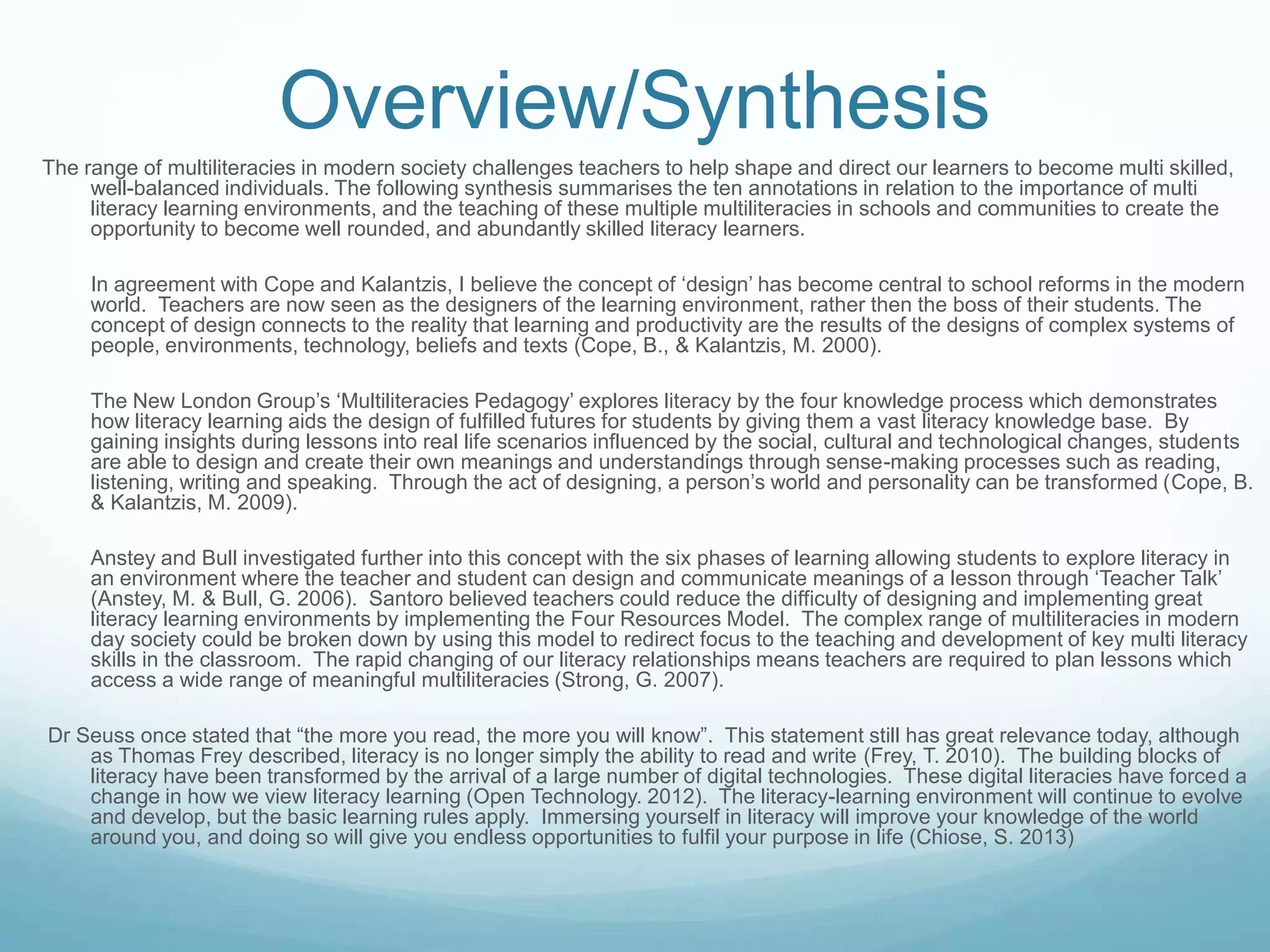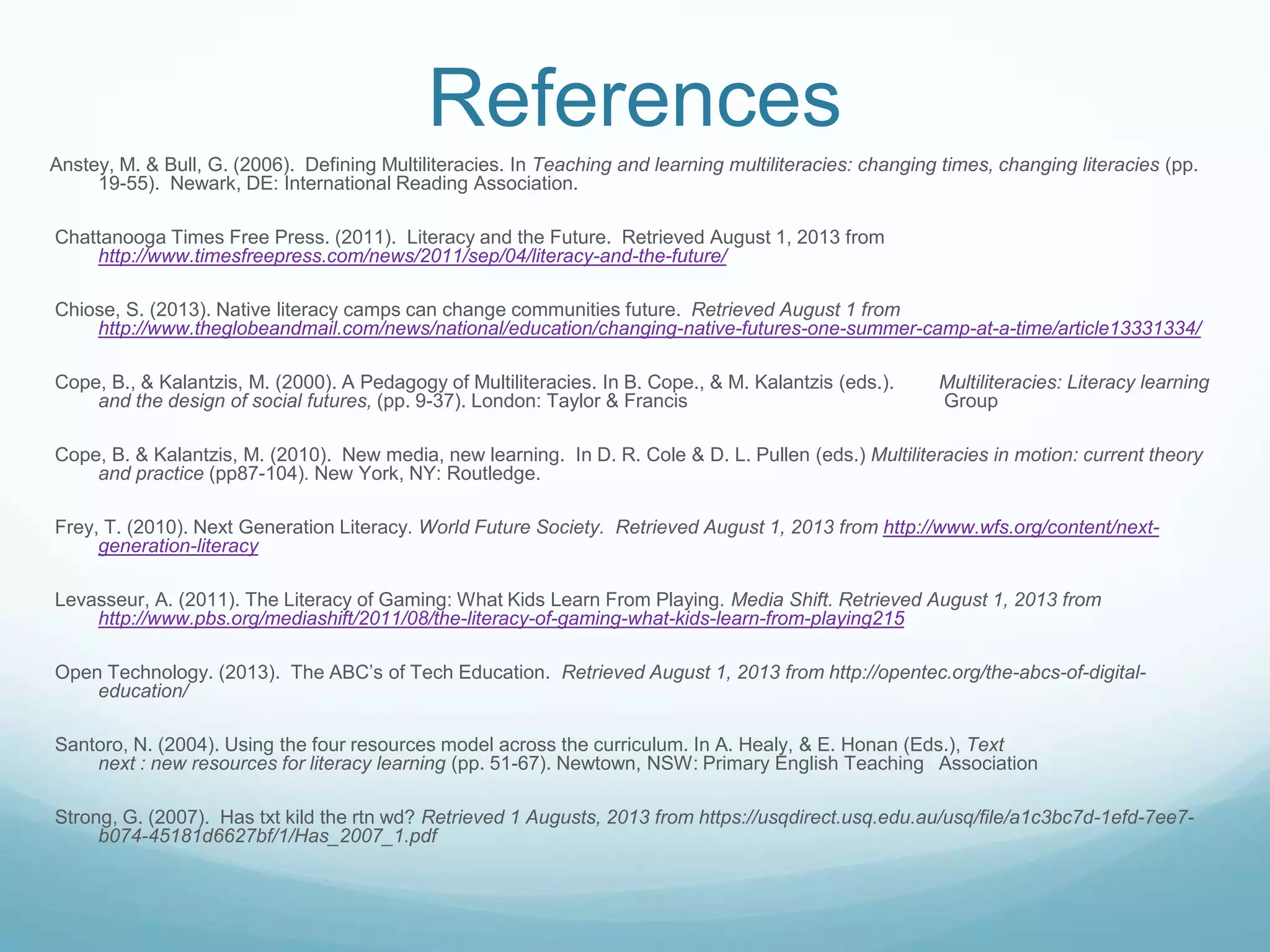The document discusses the importance of multiliteracies in education. It provides annotations summarizing several sources that advocate for teaching students multiple literacy skills to succeed in today's digital world. These include the ability to understand, critique, and create using a variety of multimedia texts. The sources argue this prepares students for real-life problem solving and participation in society. Effective teaching approaches like the four resources model can help incorporate multiliteracies into lesson planning and learning environments.
